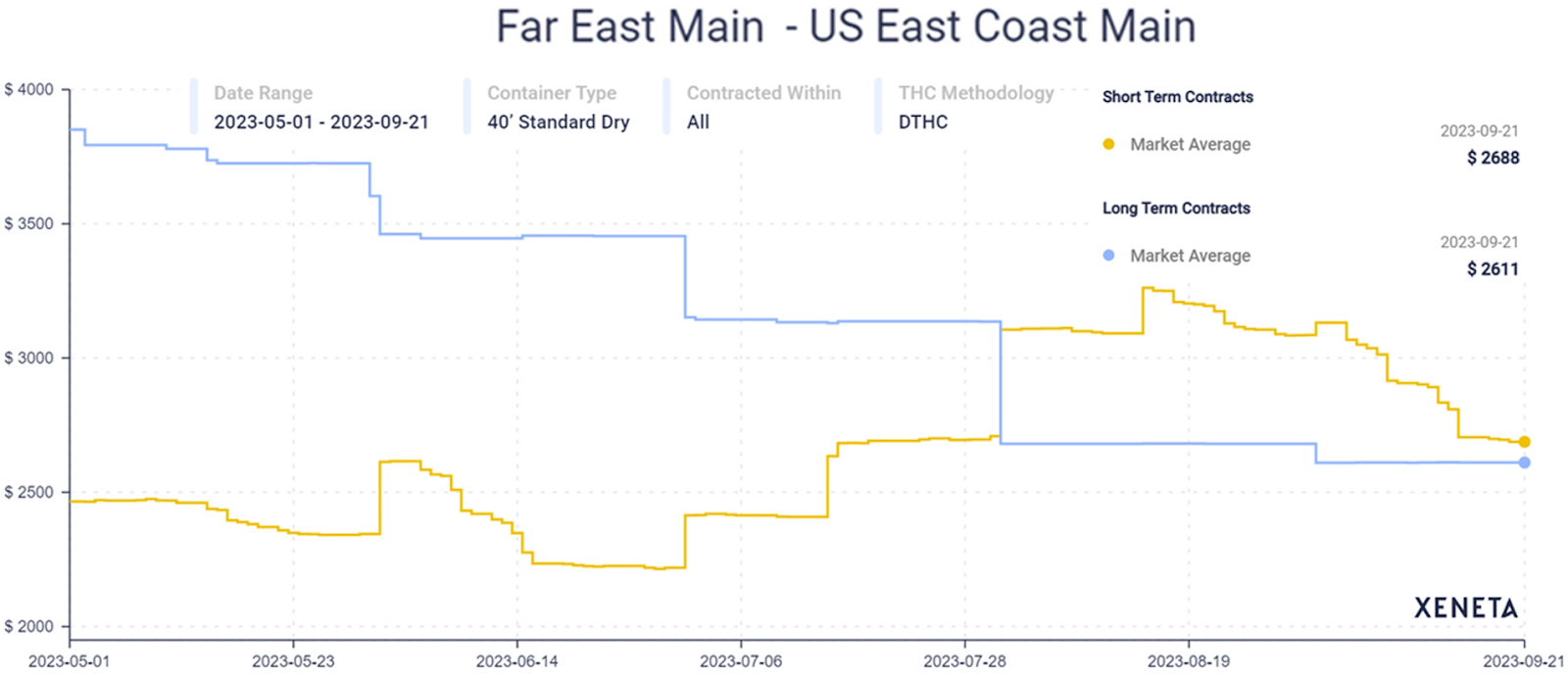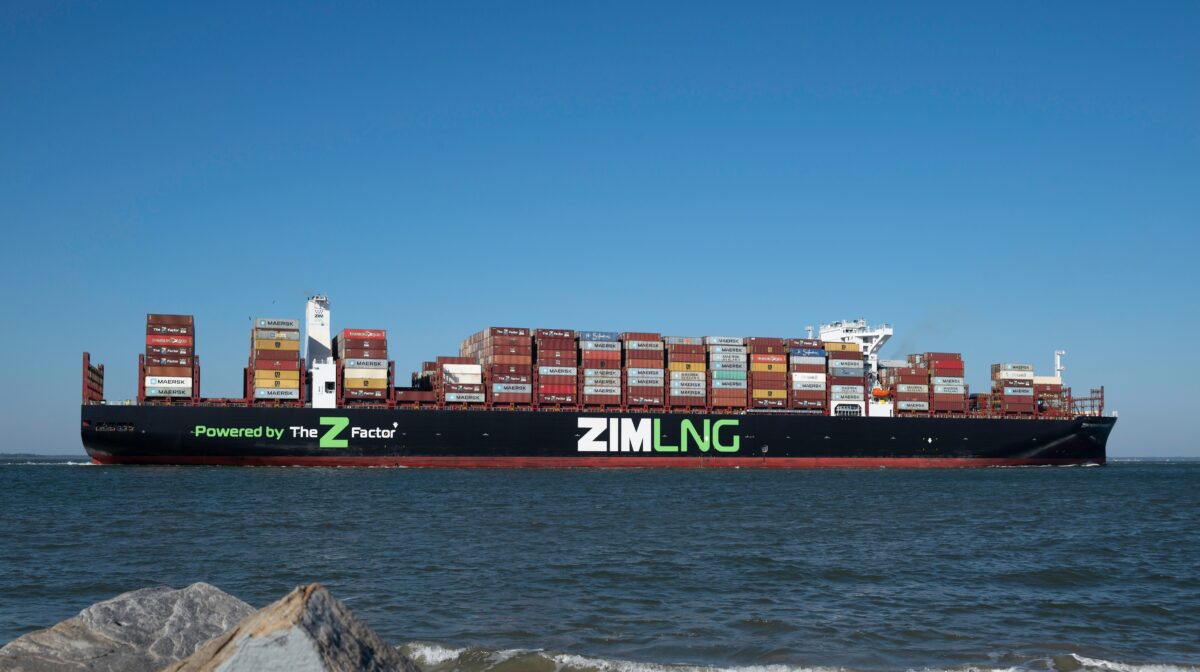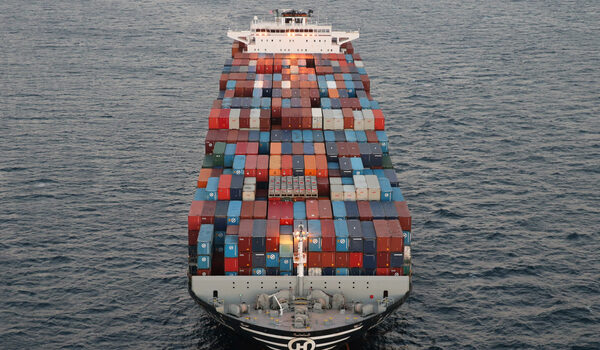The future looks bad for businesses that move containers. More and more people are starting to notice that the busy season is losing steam. The current spot prices don’t make money.
According to Alphaliner this week, rates are losing ground due to insufficient demand and growing overcapacity.
Linerlytica states that the container market sentiment is worsening as freight rates continue to decline and there is little hope for a rate recovery in October, despite carriers’ attempts to limit capacity availability through canceled sailings.
Sinking rates in both the US and Europe
As of last Thursday, the Freightos Baltic Daily Index (FBX) spot estimate for the Asia-North America West Coast route was $1,712 per forty-foot equivalent unit. This is 16% less than it was a month ago. The FBX Asia-North America East Coast rating has gone down 13% in the last month, to $2,662 per FEU.
There are also big drops in lines between Asia and Europe.
Lars Jensen, CEO of Vespucci Maritime, stated in an online post on Thursday that the spot rate for North Europe has not been this low since early 2018, when it reached a lower level for a brief two weeks. A more sustained period of spot rates this low or lower can be observed by going back to the depths of the price war in late 2015 and early 2016.
Spot levels fall back toward contract levels
In July and August, trans-Pacific spot levels got better for ocean carriers because they went above the prices of their annual contracts. Carrier executives have said that when they talk about yearly contracts, they try not to lock in prices that aren’t profitable. This means that if spot prices are higher than contract rates, spot business will be profitable again.
However, data from Xeneta shows that the difference between spot prices and contract prices in the Asia-East Coast trade has shrunk a lot in the last month.
Xeneta says that on August 15, the average spot price in the Asia-East Coast trade was $580 more than the average contract price.
No, no longer. As of last Thursday, there was only a $77 per FEU gap between short-term and long-term rates. (At $283 per FEU, the difference between spot and contract is still big on the way from Asia to the West Coast.)
Fallout for Zim

Because Zim is focused on trans-Pacific trade between Asia and the East Coast through the Panama Canal, the worsening spot market in this area is especially worrying.
Zim’s new ships are now working the East Coast route. In the first quarter, the company stopped all services to the West Coast of the United States. The Asia-East Coast route is the most important market for Zim around the world. In Q2 2023, it made up 34% of overall traffic.
Because Zim couldn’t find enough clients willing to pay the minimum price it had set for year contracts (which run from May 1, 2023, to April 30, 2024), a very high 70% of its trans-Pacific business is on the spot this year.
As of its most recent quarterly call on August 16, Zim’s pick of spot-contract mix had short-term benefits. Zim’s CFO, Xavier Destriau, has said that this could change, though.
Uncertainty Looms Over the Duration of Improvement in the Trans-Pacific Trade Lane
We are maintaining a high level of caution. The duration of the recent improvement in the trans-Pacific trade lane is uncertain. He stated on the call that it is unknown whether it will go beyond October or not.
Zim was smart to be careful because the most recent index data shows that the company’s spot trade bet may have already gone bad.
Contact Lading Logistics for comprehensive logistics solutions
Overall, lower container shipping rates can reduce costs for shippers, making it cheaper to transport goods. Lading Logistics is dedicated to staying up-to-date with the latest developments in the trucking industry. They offer a wide range of services, including:
- Freight forwarding
- Ocean, train, road, air, and container transport
- Storage solutions
- Last-mile pickup and delivery
- Retail sales and distribution
- Trade automation services
- Warehousing
By leveraging their expertise and resources, Lading Logistics aims to provide efficient and reliable international shipping and logistics solutions for their clients.



